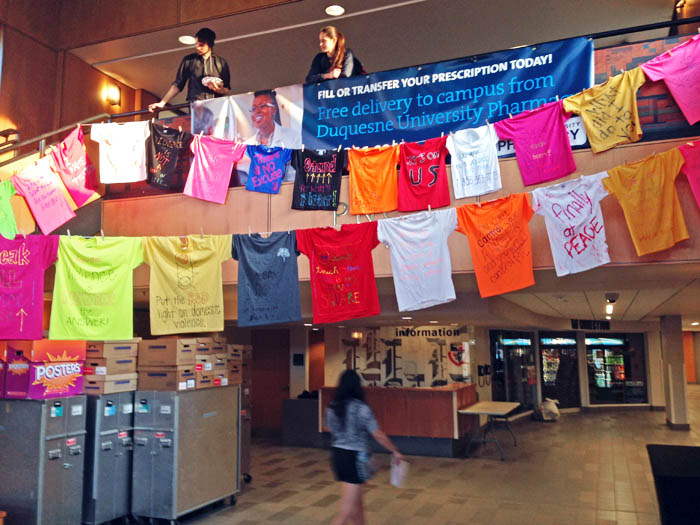

Despite projections from its studio, “Hidden Figures” managed to beat “Rogue One: A Star Wars Story” during its opening weekend. The film has made over $30.5 million against a $25 million budget.
By Nicole Prieto | Staff Writer
When you hear the word “computers,” perhaps the last (or at least second) thing you think of are people hashing out math problems of literal astronomical importance by hand. But that is one of the first history lessons box office hit “Hidden Figures” teaches. Based on Margot Lee Shetterly’s book, the film follows the triumphs of three black women employed at NASA as they work to put the first Americans in space.
Since she was a child, Katherine Goble (Taraji P. Henson) was a math prodigy who could not only keep up with advanced collegiate mathematics but also explain its principles to stunned older students. It is no surprise, then, that she becomes employed as a mathematician (computer) at NASA’s Langley Research Center. With her friends and coworkers Dorothy Vaughan (Octavia Spencer) and Mary Jackson (Janelle Monáe), Katherine breaks barriers during a critical era in the 1960s U.S. space race against the Soviet Union.
“Hidden Figures” is absolutely a feel-good film. From the start, it is not hard to divine that the women will get their happily-ever-afters while changing hearts and minds along the way. But the movie does not shy away from the emotional toil of living as a person of color in the early ’60s. From segregated public accommodations and working areas to civil rights protests and firebombed Freedom Rider busses, the film is frank about the difficult social reality the women must navigate.
Amidst all of this, Katherine’s experiences take front and center, where we witness her temporary assignment to the all-white east area of the research center. Her new office is a shared room with the Space Task Group, headed by the intimidating Al Harrison (Kevin Costner). She is responsible for checking the group’s math as it calculates the flight trajectories of the U.S.’s nascent astronauts. But even with her groundbreaking contributions, she is no less subject to the various humiliations of segregation.
Perhaps one of the film’s most heart-wrenching scenes is when Katherine eventually tells off the room about a deceptively benign problem she faces that makes doing her work far more difficult: using the restroom. The West Area where the black “computers” work is located half a mile from the Space Task Group. The problem is that the only “colored women’s restroom” she may use is in the West Area — requiring her to make exhausting runs just so she may relieve herself.
Tensions come to a head when Harrison angrily asks why she seems to disappear from her desk for long stretches of time. Henson’s performance is nothing short of moving. The normally reserved and soft-spoken Katherine, soaked to the bone from getting caught in the rain during her latest run, vents her frustrations with no punches held.
Spencer’s role as Dorothy Vaughan is no less effective. After being down an official supervisor, Dorothy has taken on managerial responsibilities over the roomful of West Area “colored computers” — without so much as a promotion in title or increase in pay. Not only must Dorothy contend with the thinly veiled racism of her superior, Vivian Mitchell (Kirsten Dunst), she also faces a much more ominous threat: the arrival of the center’s first IBM computers.
Dorothy quickly sees they are in a race against time to learn new skills that will keep all of the human computers — black and white — from being laid off once the hulking IBM machines are operational. In a blatantly unauthorized move, she takes the initiative to figure out how the automated computers work and transmit those skills to her coworkers. Spencer’s acting is a delight; her depiction of Dorothy as a capable leader with a tactful brand of wit is a nice balance to Mary’s more biting assertiveness.
Speaking of Mary, I will try to keep my fangirl bias brief: Admittedly, I already had stars in my eyes the moment I saw singer-actress Janelle Monáe (also known by fans as “Cindi Mayweather” or “Electric Lady No. 1”) appear on-screen in her second film.
Mary’s dream is to become NASA’s first black female engineer. But when an addendum in employment requirements states that she needs to take additional classes at an all-white high school to be qualified for the position, she must petition a Virginia court to be permitted to attend. From her barely held-back relish at speeding down a roadway to her charismatic charm in setting up Katherine with Colonel Jim Johnson (Mahershala Ali), Monáe depicts Mary as a vivacious and funny friend who remains no-nonsense about her goals. Fans still waiting for Monáe’s next album ought to keep an eye out for her first Oscar.
Overall, it is difficult to find so much as a technical detail to criticize in the film. It is directed by Theodore Melfi, scored by producer Pharrell Williams and contains a number of quality supporting performances. The movie is a fitting celebration of women of color’s historic contributions to the space program. It is no surprise that it in its wide release opening weekend, it unseated “Rogue One” from the No. 1 spot in the box office. If you are looking for a good start to the new year, “Hidden Figures” is a movie you do not want to miss.



